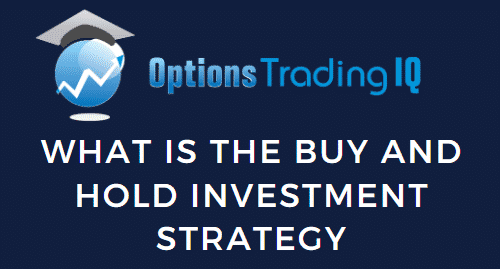

Contents
- Introduction
- Benefits Of The Buy And Hold Strategy
- Risks And Downfalls Of Buy And Hold Investing
- Conclusion
Introduction
The buy and hold investment strategy is exactly what it sounds like – buying a security and holding it for an extended period.
An investor that employs this strategy believes that long-term returns can be greater than short-term gains despite the volatility of the market.
Essentially, buy and hold investors believe that the statement ‘timing the market’ is arbitrary and carries very little weight, rather, the statement ‘time in the market’ is more reflective of their investing attitude.
When combined with covered calls, the buy and hold strategy can produce outstanding results.
Buy and hold investors employ the passive investing methodology that draws parallels with the efficient market hypothesis, a theory which says that all known information about a stock is already factored into its market price.
The buy and hold methodology is strongly aligned with the value investing strategy used by billionaire investors Charlie Munger and Warren Buffett.
Investors using the buy and hold strategy will most often employ a fundamental analysis approach, in which they will research the market to find securities which have been undervalued, hold them until they gain a respectable value and then sell.
Benefits Of The Buy And Hold Strategy
reduction: The passive investing approach enabled through the buy and hold strategy reduces the risk in than an active manager may make mistakes. The benefit of reducing risk on this level is that a trader may increase their overall returns on a benchmark index such as the s&p 500.
Fee Savings: A key drawcard for the buy and hold strategy is that an investor who is holding their trades for longer will not need to trade as often. With the ever-increasing brokerage costs charged by firms and online platforms, this provides the investor with the opportunity to minimise their costs, increasing the overall net return of their portfolio.
Simplicity: The average buy and hold investor will also implement other strategies within their portfolios such as index funds or dollar-cost averaging. The simple approach offered through the combination of these strategies saves time and makes the overall investing experience more simple.
Risks And Downfalls Of Buy And Hold Investing
With all investing strategies, the same core risks apply. These risks include the primary types of market risk such as price risk and principal risk.
There is a lack of flexibility within the buy and hold strategy which is another point of concern for sceptics of the strategy.
Principal Risk: This form of market risk is the ability of an investor to lose the principal amount they fist invested in the security.
Price Risk: This form of market risk is mainly concerned with the volatility of the market, and the risk associate with large price drops resulting in the devaluing of an investor’s portfolio value.
Lack of flexibility: Investors that cite the lack of flexibility as one of the primary downfalls of the buy and hold investment strategy are concerned with the concept of leaving your investments regardless of market movement.
An example of this lack of flexibility causing the downfall of the strategy was during the bear market of the great recession.
Active traders referred to this moment as the death of the buy and hold strategy.
Understandably, many investors started to question the effectiveness of the strategy due to the ‘lost decade’.
A term coined for the period 2001 through to 2009 where if you implemented the buy and hold strategy with an S&P 500 index mutual fund, the investor would have netted in a nearly 0% return.
Critics of the strategy do not often recognise that it is quite extensive and most commonly includes minor elements of timing, for example, dollar-cost averaging.
If an investor had incorporated dollar-cost averaging within their buy and hold strategy during the lost decade they would have substantially improved their overall net returns.
Additionally, through the process of diversification, a buy and hold trader who also contained bond funds amongst their other investments during the great recession and the proceeding bear market would have positioned themselves to receive positive returns.
Conclusion
The buy and hold strategy can be an intelligent one for a long-term investor who wants to reap the rewards over the course of decades. The strategy is low-cost, simple and can be implemented with other similar strategies such as value investing and dollar-cost averaging.
Trade safe!
Disclaimer: The information above is for educational purposes only and should not be treated as investment advice. The strategy presented would not be suitable for investors who are not familiar with exchange traded options. Any readers interested in this strategy should do their own research and seek advice from a licensed financial adviser.










